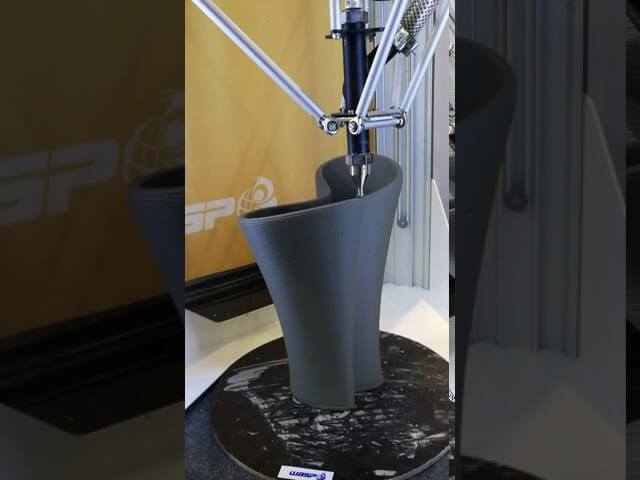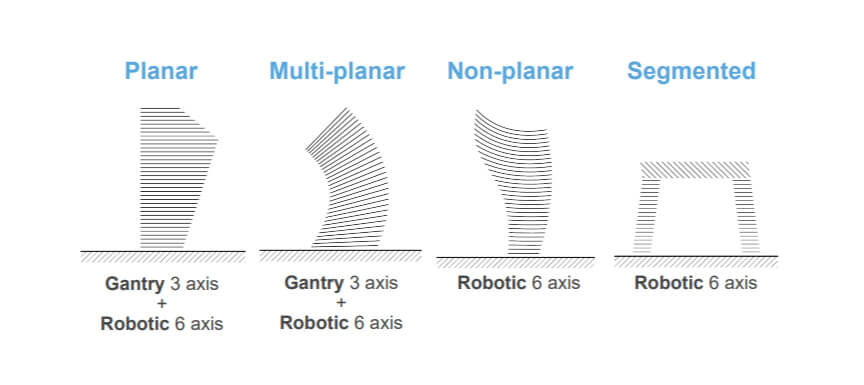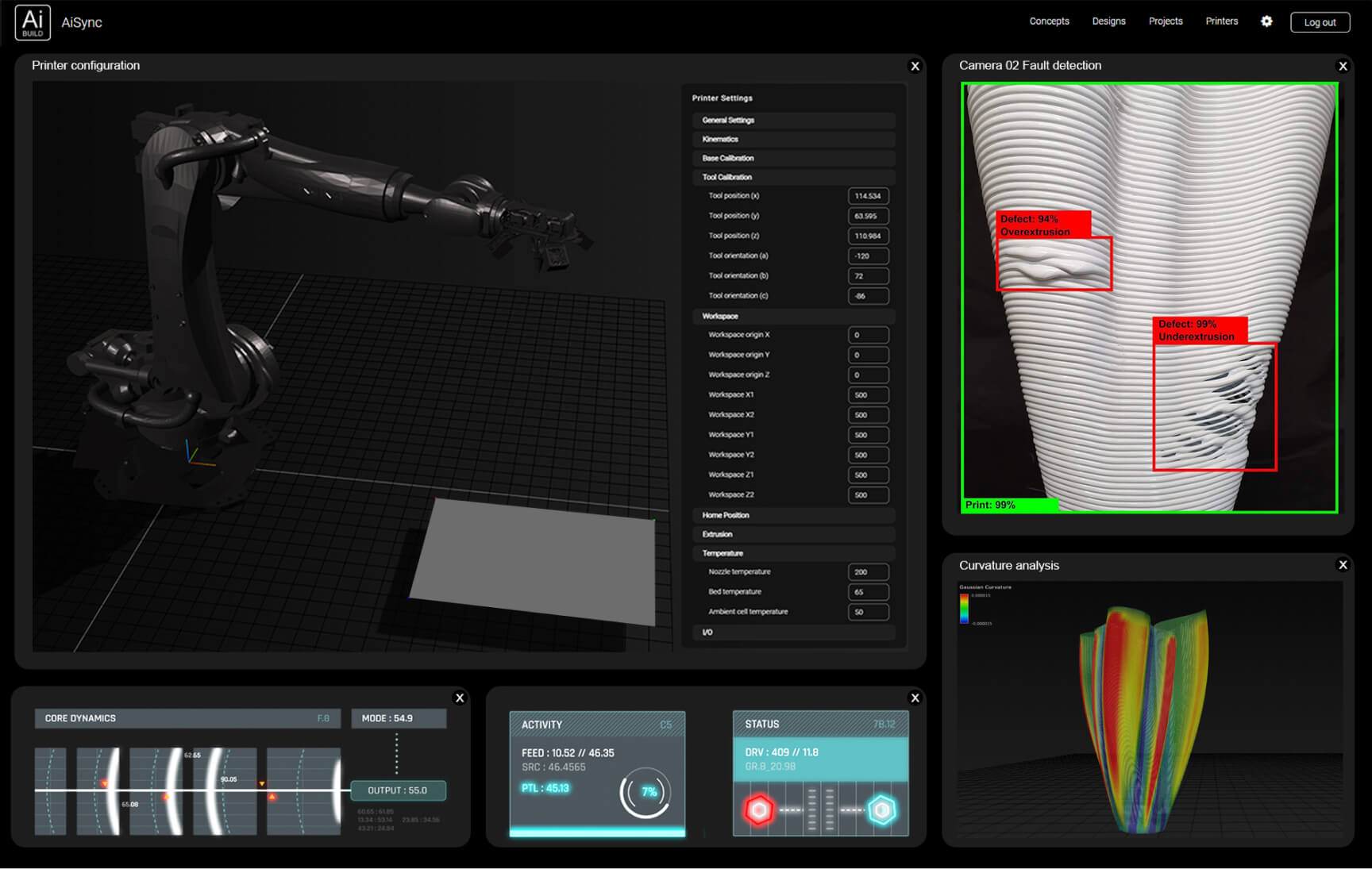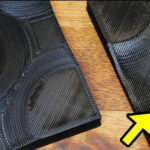AI Build is a London-based software company with a line of products available to make additive manufacturing more efficient by automation. The company has been around for a while, and are collaborating with some fairly big names including Weber, Boeing, Kuka and Colossus.
Lately, AI Build has caught our attention with some nice videos of the out-of-plane printing capabilities of their AI Sync software, so we decided to have a chat with them about what they are bringing to the world of AM, especially on the toolpath generation front.
You can see a video of the conformal toolpath created by AI Sync in the video below. Conformal toolpaths allows printing on curved surfaces, as you can see.
The AI Sync software is the core of AI Build’s cloud-based offerings, and offers a range of features on the cloud-based toolpath generation side of things. Or as the AI Sync website says, the platform “enables fully automated toolpath generation, process control and monitoring workflows for FFF/FGF based large scale industrial 3D printers”.

Toolpaths on the Cloud
“Our software is a cloud based toolpath generation platform. We have specifically focused on large format 3D printers (gantry or robotic arm) as current software on the market do not make the most of all axes that these systems have. For example we are able to do multi planar and segmented toolpaths.” said Luke Rogers Commercial Director at Ai Build.
“We are proud to say that AI Sync is the first commercial software to offer these toolpaths.”
In terms of the toolpath types, there are four main types that are available which are the classic planar type, multi-planar, non-planar and segmented, as you can see in the diagram below.

By printing out of plane, AI Build is allowing genuine 3D printing, as opposed to the 2.5D that most of us use daily. The benefits of this are numerous, not least in terms of strength. By printing continuous flowing toolpaths in three dimensions one can avoid limitations imposed by printing on one plane.
“The problem we are trying to solve is that large format builds require a high level of expertise and a long time to set up. They also need multiple build iterations before a successful part will be ready. What we are doing is going from CAD to successfully build autonomously and fast.”
While there are other methods of generating out of plane toolpaths, none of them are catering for large scale industrial plastic printers. Most of the current solutions are either open source projects aimed at desktop printers and makers, or are in the research domain.
“We have combined a visual programming user interface and automation to make our software as user friendly as possible and to provide as much flexibility to the user. This means that you don’t need to be an expert to set up and run these machines as our software automates this for you. We have also opened our API so that if you are an advanced user you can create your own operators and workflows tailored to your own specific requirements.”
After the software has assisted with the toolpath optimisation, it also allows the workflow to be saved as an asset, and adjusted parametrically for different parts later down the road.
https://www.youtube.com/watch?v=KbAuqE2NlS4
Remote Print Management
In addition to the toolpath features, the AI Sync platform allows remote management, and monitoring of multiple printers from anywhere in the world.
“Weber in Germany has already taken control of one of our printers in the UK to print a part, for example,” said Rogers.
“This means you can print parts where you need them saving on shipping costs and time linking to the distributed manufacturing model.”
“We are deeply integrating with the hardware, so one software controls all aspects of slicing and interfacing with the hardware. This means that we can have real time control over the hardware. Currently we use this to identify defects in real time and notify the operator of the issues. However, in the future this will lead us towards real time corrective actions to improve RFT.”
Real Time Control
Having real time control over the printers with sensor feedback means a couple of key benefits. Firstly the sensor data from the printers can be used to detect defects in realtime and supply notifications to users of the issues. This can save wasted build time and reduce quality inspection needed. The next step for this, according to AI Build, is to turn this into real time corrective actions so engineers need never experience a failed print ever again.

AI Sync will work with pretty much any gantry or robotic plastic printer, but to experience the full benefits of real time control and monitoring, users will need to install a camera (or other sensors) and a post processor unit to the system. You certainly don’t need to make any modifications to try the toolpath or simulation features out though.
There are a lot more features than what we have covered here. AI Sync is not just one product, but a platform of different tools. So if you’d like to read more about how AI Build and the AISync platform, then head over to their website, at this link.


